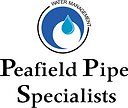Hydrostatic pressure testing is a critical procedure used in various industries, including construction, manufacturing, and oil and gas. It involves subjecting a vessel or pipeline to fluid pressure to ensure its structural integrity and safety under operating conditions. However, like any other industrial process, hydrostatic pressure testing carries inherent risks if not performed safely and accurately. In this comprehensive guide, we will delve into the essential steps and precautions needed to execute hydrostatic pressure testing safely and effectively.
Understanding Hydrostatic Pressure Testing
Before we dive into safety measures, let’s briefly understand what hydrostatic pressure testing is and why it’s vital.
1. What is Hydrostatic Pressure Testing?
Hydrostatic pressure testing involves filling a vessel or pipeline with a liquid, typically water, and pressurizing it to a level higher than its normal operating pressure. This test is crucial to identify potential leaks, weak points, or structural defects in the equipment.
2. Why is it Important?
The consequences of equipment failure due to undetected defects can be catastrophic, leading to costly downtime, environmental damage, and, in the worst cases, human injuries or fatalities. Hydrostatic pressure testing is an essential quality control and safety measure to ensure that equipment can withstand the pressures it will encounter during regular operations.
Preparing for Hydrostatic Pressure Testing
Now that we understand the importance of hydrostatic pressure testing let’s explore how to prepare for a safe and accurate test.
1. Equipment Inspection
Before starting the test, thoroughly inspect all the equipment involved, including pumps, pressure gauges, valves, and the vessel or pipeline itself. Any damaged or worn-out components must be replaced to ensure the test’s reliability.
2. Selecting the Right Fluid
Selecting the appropriate test fluid is crucial. Typically, water is the preferred choice, but it’s essential to consider the compatibility of the fluid with the material of the vessel or pipeline. In some cases, special fluids might be required.
3. Safety Measures
a. Protective Gear
Safety should be your top priority. Ensure that all personnel involved wear appropriate protective gear, including helmets, eye protection, gloves, and steel-toed boots.
b. Ventilation
If the test is conducted indoors, ensure adequate ventilation to prevent the accumulation of potentially harmful fumes or gases.
c. Emergency Procedures
Have a well-defined plan in place for handling emergencies. This should include procedures for handling leaks, pressure relief, and evacuation if necessary.
Performing the Hydrostatic Pressure Test
With the preparations complete, it’s time to move on to the actual testing procedure.
1. Filling the Equipment
Begin by slowly filling the vessel or pipeline with the test fluid. Gradually increase the pressure to the desired level, keeping a close eye on pressure gauges and monitoring for any unusual sounds or leaks.
2. Maintaining Pressure
Once you reach the specified test pressure, maintain it for the required duration. This duration can vary depending on industry standards and specific equipment requirements.
3. Inspection During Testing
Throughout the test, continuously inspect the equipment for any signs of leakage, deformation, or other anomalies. Ensure that pressure relief mechanisms are in place and functioning correctly.
Post-Test Procedures
After successfully conducting the hydrostatic pressure test, there are several critical post-test procedures to follow.
1. Pressure Release
Carefully release the pressure from the equipment in a controlled manner. This step is crucial to avoid sudden pressure drops that can lead to equipment damage or injury.
2. Draining the Test Fluid
Remove the test fluid from the vessel or pipeline and dispose of it properly. Ensure that the equipment is thoroughly drained to prevent corrosion or contamination.
3. Inspection and Reporting
Inspect the equipment once again after the test to check for any visible damage or defects. Document the results and report them according to industry standards and company procedures.
Common Challenges and Troubleshooting
While conducting hydrostatic pressure tests, you may encounter various challenges. Here are some common issues and how to address them:
1. Leaks
If leaks are detected during the test, immediately reduce the pressure to a safe level and identify the source of the leak. Repair the affected area before retesting.
2. Pressure Fluctuations
Unexplained pressure fluctuations can be indicative of a problem with the testing equipment or the test fluid. Investigate the issue and resolve it before continuing the test.
3. Structural Deformation
If you observe structural deformation of the equipment during the test, stop the test immediately. Structural integrity is compromised, and the equipment may need to be replaced or repaired.
Conclusion
Hydrostatic pressure testing is a crucial step in ensuring the safety and reliability of various industrial equipment. By following the steps outlined in this comprehensive guide and prioritizing safety at every stage, you can perform hydrostatic pressure testing safely and accurately. Remember that safety should always be the top priority, and thorough preparation and attention to detail are key to successful testing. When conducted correctly, hydrostatic pressure testing provides peace of mind, knowing that your equipment is ready to withstand the pressures of its intended use, protecting both assets and lives.
